The Counselor's Bookshelf:
|
|
I follow the Washington Post on Instagram and this article popped up in June: This Mom Made a Few Don't Give Up Signs and Planted Them in Her Neighborhood. Soon, The Signs Went Global. Wow. Saddened by talking to a friend about the rise in teen suicides, Amy Wolff came up with a simple idea for helping people find hope and connection: Print lawn signs with inspiring messages. It sounds so simple, and even trite, but it turns out they are helping people by reminding them of the worthiness, strength and beauty, often at the times when they need it the most. On her Instagram feed she shares quotes from people who have been inspired by the signs in their own lives, and those who heard from others what a difference the signs made. Every time one of these posts pops up in my feed I feel the power of the message in my own life and I'm grateful it is being shared in so many places. Isn't it amazing how often we need to be reminded of our own worth, strength and beauty? Internalizing this kind of message isn't a one and done. It's a practice that we must come back to, again and again, as we navigate the rough waters of life. Follow Don't Give up Signs on Instagram, @dontgiveupsigns and visit the website to learn more, and buy signsm at https://www.dontgiveupsigns.com/ Here are a few posts from Instagram: “A neighbor who has never spoken to me before in 12 years of living in an apartment next door to our home, who years ago I’d see shaking his head at my political signs as he walked by, walked by my yard a few months ago. I said hello. He said nothing in response, as usual. Then he stopped and said, ‘Is that a suicide thing or something?’ I just said, ‘What, the sign? It could be, or not. Just a reminder that you matter.’ He said, ‘This may sound weird but I wanted to kill myself yesterday, and the day before that, and the day before that, and walking by your house always gives me a boost.’ I said, ‘I’m glad you’re still here’ as he walked off. I was blown away.” #youmatter From July 31, 2019
0 Comments
A few months into my clinical internship, while a graduate student in mental health counseling, my back started to hurt. Just a little bit. It wasn't the first time my lower back had given me trouble and I brushed it off as a minor nuisance caused by my new therapist lifestyle in which work = sitting all day. I felt confident that a little bit of yoga, stretching and exercise would resolve the issue as it had in the past. Two and a half years later, after seeing a sports medicine doctor, a DO, an acupuncturist and a chiropractor, engaging in physical therapy and daily stretching, the pain is still here. For the most part it is just a nuisance and it hasn't gotten worse, but it also hasn't gotten better in spite of everything I have tried. I'm still looking for solutions. Certainly stretching and exercise help and for now, I keep those self-directed (and free) exercises on board while I try different things. It occurs to me that I may find the most lasting relief from my own brand of movement therapy that incorporates the most useful of the things I've tried: basic pilates, yoga, stretching, core exercises, and better posture. Maybe a better chair? I'm aware that there may be a psychological component: trauma from breaking my leg twice as a child, attention to the pain leading to cognitive distortions ("my body is weak", "it's my fault I feel bad", "I'll never get better"), and even the possibility that I need to cultivate a sense that the universe "has my back" or I need to "grow a backbone" by cultivating greater confidence. There are a myriad of ways to approach physical health problems and the options can feel both hopeful and daunting.  The last few years have been a great teacher in understanding that, for most of us healing is a journey that we must rise to meet. We are supported along the way by friends, family, and providers, and sometimes the silver bullet arrives in the form of a doctor, a therapist, or another form of healer that cures us completely. More often, however, we spend months and years living in our own bodies and minds seeking our own acceptable degree of wellness. My husband forwarded me this article by Julia Belluz of Vox the other day. I found it really helpful. She writes that lower back pain is really common and that often solutions are elusive. She has reviewed over 80 research studies and her conclusion, based on their conclusions, is that panacea remedies are hard to come by. Rather, it is a slow process of urging an ever aging body back into alignment, as best we can... 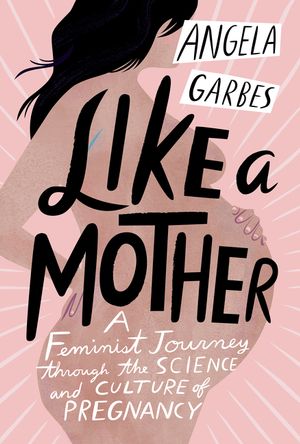 Like a Mother: A feminist journey through the science and culture of pregnancy might not seem like an obvious book for a mental health themed blog. Or, on the other hand, maybe it does? Maybe it makes a lot of sense. We talk about postpartum depression like it's a discrete thing that happens to some people (yes, men get it too) after a new baby is born. What about the idea that pregnancy, with all of its physiological and psychological effects on the mother, and on the entire family unit, actually causes changes and challenges that exist on a spectrum continually evolving over time. Existential and often paradoxical questions about what it means to bring new life into the world, realities of physical changes in the body, a whole range of psychological experiences (often including many mood states, not just depression) as well as cultural expectations all play into each person's unique experience of growing a family. Also, we need to take into account the harsh truth that pregnancy, birth, and life after can be dramatically different for those who have money and access to resource than for those who are poor, live in under-served communities, and, the statistics on this are clear, are not white. Increasingly we are talking about gender non-binary and transgender people having children in a medical system that does not always understand their needs. All of this will have much to bear on the mental health of the entire family. After hearing an interview on Fresh Air with Angela Garbes, I decided to buy the book. For some reason, perhaps the tone of the interview, I thought it would be a light and intellectually stimulating read. In the end I actually found reading this book to be both inspiring and fascinating, and also hard. Everything she covers from the dramatic, and sometimes long lasting, physical changes to the mother's body, to the scientific community's inattention and relative lack of funding for this critical aspect of women's health, is eye-opening and intense. She doesn't sugar coat anything, and thank goodness, because what we are left with is a deeply honest look at what creating new life really means. So much of mental health work is about giving people a space to be witnessed and held while sharing the good, the bad, and the ugly of human life. It is resources like this book that help us feel less alone when things get weird (or slimy, oozy, sticky and stinky). The following excerpt is a taste of Garber's writing. It shows how fairly simple and straightforward research helps us identify small interventions that can make huge differences in the lives of new mothers. If you like what you read, give the whole book a go. It will open your eyes, soften your heart, and hopefully help you, and your loved ones, feel less alone in the gritty, visceral, emotional and very human task of giving birth. In the early 1980s, after fifteen years of working in labor and childbirth, [Penny] Simkin, a physical therapist by training, was considering a career shift. 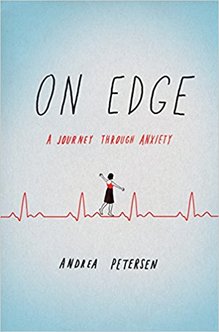 I've been thinking a lot lately about sharing. Not the kind of sharing we teach our children when they cling to their toys. I mean sharing less tangible, but equally substantial, pieces of ourselves. I'm talking about sharing our thoughts, personal stories, histories, and identities. I listen to a lot of podcasts (The Moth, Death, Sex and Money, Modern Love to name a few) where people share their personal stories with large audiences. I listen to so many of these stories that it seems completely normal that someone would want to express themselves in this way. Then I find myself in a position to share something personal about myself and I get scared. Sometimes really scared. Why? Because sharing our histories, our viewpoints and our values is a deeply vulnerable thing to do. We are social creatures and we share without knowing how our most personal perspectives will be received. If you think about stage fright, fear of public speaking and any other social anxiety, it doesn't make sense why the brain's fear center would fire when physical safety is almost entirely guaranteed. And yet, we can all relate to the quickening of the heart, the flush of heat to the face and the sweaty palms that go along with taking social risk. Remember the first time you asked someone out on a date?! On Edge: A journey through anxiety by Andrea Petersen is a fantastic merging of personal narrative and journalism. As someone who is fascinated by anxiety (for both personal and professional reasons) I gobbled this book up in a matter of days. As I was reading, I was continually impressed with the author's candor in sharing her personal experience with the world. And I was grateful. It is through sharing our deepest selves that we risk rejection, and also where we find connection. As I read her book I felt resonance with her struggles and her triumphs. In sharing a piece of herself, she has given a world of people companionship in suffering from one of life's most isolating and painful conditions. If you want to feel less alone in your anxiety, and understand it better from a scientific perspective, this book will be a resource and a balm. Here's an excerpt: Fear ambushes me. It is early on the morning of December 5, 1989. At least early for a college student, which is what I am. A sophomore at the University of Michigan in Ann Arbor, a bucolic campus of creaky A-frame houses, earnest politics, fraternity sweatshirts, and dollar pitchers of beer... 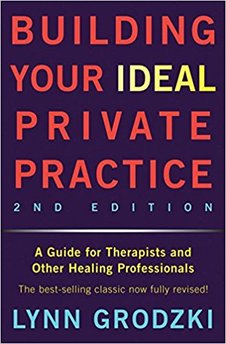 Do you ever get a good idea and then watch it quickly mature and flourish in your imagination? You are reading from your newly published book to an enthusiastic crowd! You are being interviewed on Fresh Air! You are invited to give a TED talk or, if you're a therapist, you see your schedule full of beloved clients whose evolution and growth feels deeply rewarding while your bank account fills with well-deserved inflow of money. When the fantasy fades, you are back where you were when you started: full of good ideas, and with the glow of fruition still a long way off. There's where you are now, there's where you want to be, and there's everything in between. It's in the space between the dreaming phase and the successful outcome phase where we spend most of our time, and where we can struggle to stay motivated, inspired, and focused. Lynn Grodzki's book, Building Your Ideal Private Practice: A guide for therapists and other healing professionals, offers a bridge between vision and final product. She guides us through the nuts and bolts of advertising, handling money, building an online presence, keeping clients, and other aspects of running a private practice. What is so magical about the book is how she integrates these practical tools with meditations, positive affirmations, and intuitive exercises that help to clarify vision, develop an abundance mindset and engage our creative, passionate, playful sides so often left out of the day-to-day realities of running a business. When I feel stuck, bored, discouraged, or unclear, I open this book and am reminded of the possibilities inherent in each moment, and the practical tools that will help make those possibilities a reality. I highly recommend this book. Here's an excerpt: Send Love to Your Practice Years ago I developed a meditation to enhance therapists' feelings of goodwill and love toward their businesses. I teach this same meditation in almost every presentation or workshop I lead because it does so much good so quickly providing therapists with a quick antidote to fear-based thinking. In the space of the five minutes it takes to complete the meditation, I see therapists make a shift. As they contemplate sending love to their businesses, their faces change. Furrowed brows become smooth, tense jaws lift up into soft smiles, hunched shoulders relax. Here's a written transcript of the meditation. Ask someone to read it to you or make your own tape. Then sit back, listen, and send love to your practice... I recently came across a collection of letters to The Atlantic in which people shared their experiences with anxiety. Readers were prompted to write after the magazine published an article by Scott Stossel, author of the 2013 book My Age of Anxiety: Fear, hope, dread, and the search for peace of mind. I read this book a few years ago and found it to be exceptionally good. It reads like an encyclopedia entry/memoir hybrid. He artfully melds research, history, and anecdotal musings from famous people with his own challenging and inspiring personal story. I'll do a blog post on this book soon- it's one I recommend.
In the meantime, I'm sharing this collection of letters to The Atlantic because they are a beautiful expression of the ways we experience anxiety in our lives. Anxiety is a tenacious, idiosyncratic, sometimes agonizing, other times energizing, and often downright baffling malady. It affects each of us in different ways and the stories that come out of our experiences are diverse. I hope this will help you feel less alone in your own struggles. Check it out HERE. 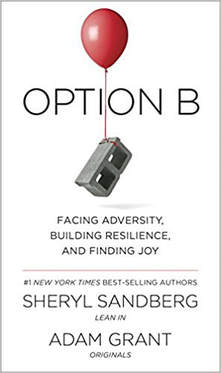 I just finished reading Option B: Facing adversity, building resilience, and finding joy, by Sheryl Sandberg and Adam Grant. The book tells the story of the sudden death of Dave Goldberg, Sheryl's husband, and her family's process of rebuilding their lives after. It strikes a nice balance between personal narrative and how-to manual for overcoming hardship and building resilience. Adam Grant's contribution, as a psychologist and educator, rounds out the story by providing research and relevant advice for moving through a period of pain and struggle and reclaiming joy. One of the tools they talk about is the Three P's. The following excerpt explains how this tool can be useful in getting out of the stuck places our mind takes us in stressful circumstances: We plant the seeds of resilience in the ways we process negative events. After spending decades studying how people deal with setbacks, psychologist Martin Seligman found that three P's can stunt recovery: 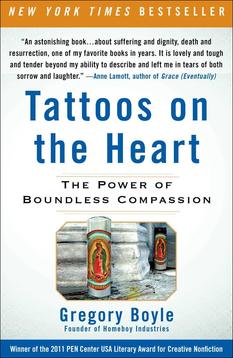 Tattoos on the Heart is one of my favorite books of all time. The authenticity, clarity, humility and compassion that Father Boyle brings to his work with Homeboy Industries, a gang intervention program in Los Angeles, is deeply moving and inspiring. I cried and laughed equal amounts as stories of loss, hardship, courage and profound transformation flowed seamlessly from one to the next. Here's an excerpt: I'm working at my desk one day, eyes pouring over something. You know how you can feel when two eyeballs are staring at you. I look up and it's Danny. He's a short, chubby ten-year-old who lives in the projects and is one of the fixtures around the office... 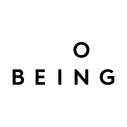 Lately, as I have felt pummeled by the rapid fire news coming from all corners of the Earth, a sense of sadness and powerlessness arises in the face of the enormity of the problems we face. It is at moments like these that I am finding myself, more and more, soothed and supported by the words and images of poets, artists, philosophers and otherwise authentic, engaged and deeply feeling human beings who grapple with these issues. Their ability to find peace, love and possibility woven into challenge reassures my worried heart. John Donohue was one of these people. Here are some excerpts from one of his last interviews ever, with Krista Tippett of On Being: I mean I think that — and it’s the question of beauty, I mean you’re asking, essentially — as we are speaking, that there are individuals holding out on frontlines, holding the humane tissue alive in areas of ultimate barbarity, where things are visible that the human eye should never see. And they’re able to sustain it, because there is, in them, some kind of sense of beauty that knows the horizon that we are really called to in some way... |
The Counselor's Bookshelf:Sharing the books, articles, podcasts, and other resources I'm drawing from personally, and in my work as a counselor. Archives
October 2019
Categories
All
|
Proudly powered by Weebly
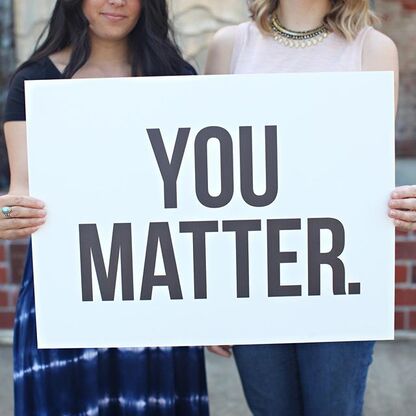

 RSS Feed
RSS Feed